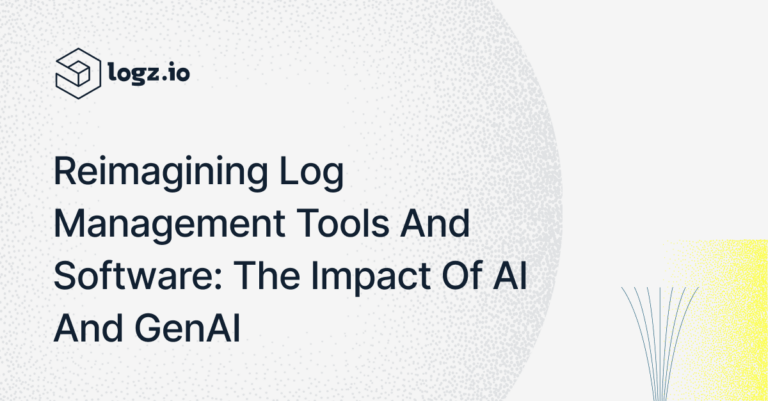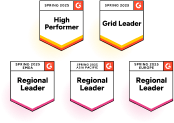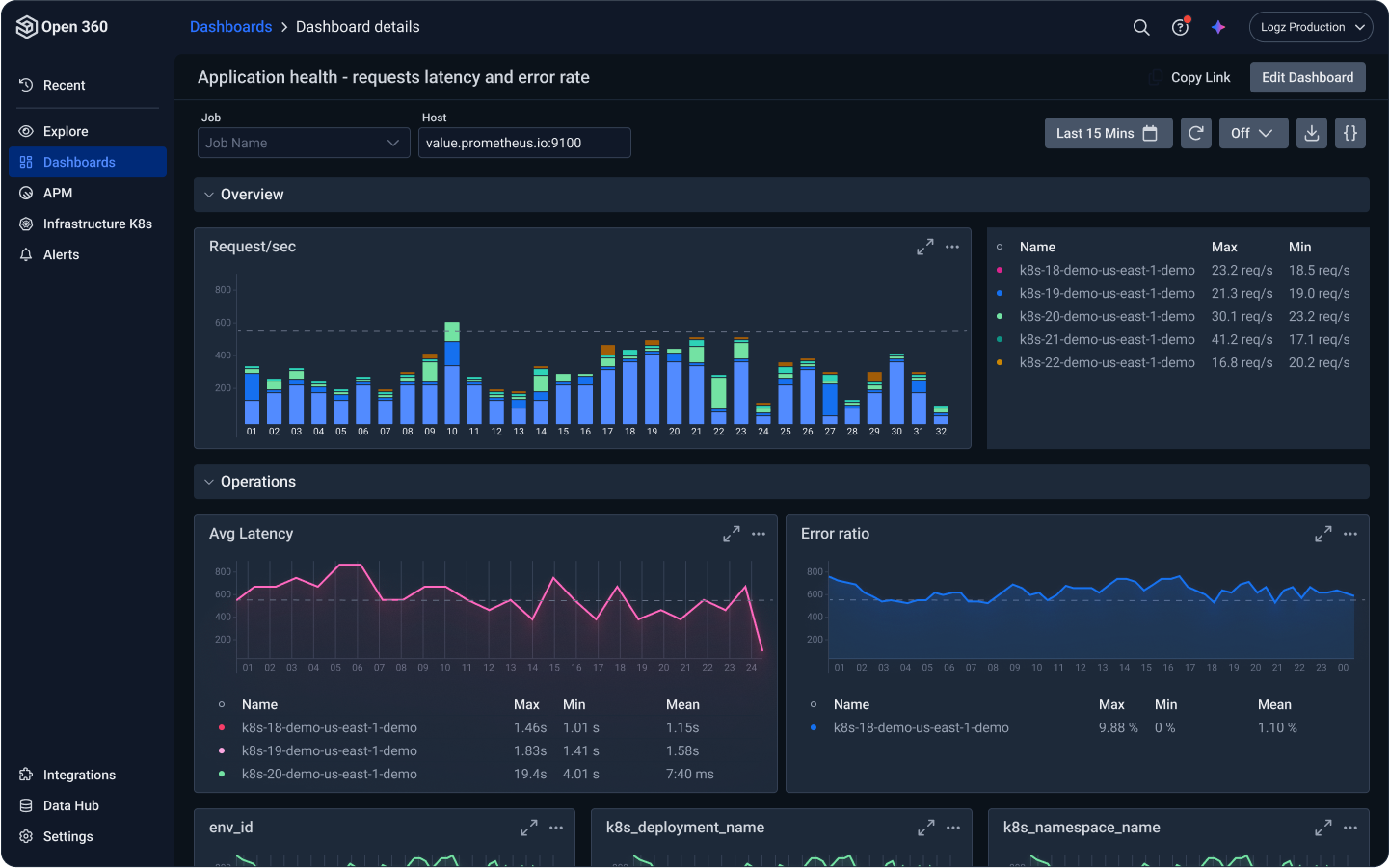
Your Next Observability RFP is All Wrong. Why AI Changes Everything
September 23, 2025
AI-first observability addresses two of the most pressing troubleshooting challenges: complex IT environments and AI-generated code. But understanding how to implement AI in a way that brings ROI, requires cutting through the hype and maintaining realistic expectations, while keeping a forward-thinking vision.
In this blog post, we bring practical tips for including AI in your next observability RFP. The article is based on a webinar held with Logz.io founders, CEO Tomer Levy and CTO Asaf Yigal. Below, we also bring the main highlights of the webinar.
GenAI is Transforming Coding But Raises Challenges
In the upcoming years, we predict that most new lines of codes will be written by AI. While this accelerates code development and velocity, it also poses new challenges:
- Understanding AI logic and edge cases (code reviews)
- Troubleshooting and debugging code that isn’t fully comprehensive
- Testing coverage gaps
These challenges compound the existing complexity of modern IT environments. Over the past decade, cloud infrastructure and microservices (K8s, containers, serverless, multiple environments, etc.) have enabled scalability and faster development, but also created visibility gaps for DevOps teams, which impede troubleshooting.
Legacy observability solutions were not designed to meet this technological reality. They were built to monitor static, human-written applications and monolith or basically distributed infrastructure. They weren’t designed for dynamically generated code or to correlate data from dozens of sources.
This leaves DevOps and engineers with blind spots. They are waking up at 2AM when an alert fires, correlating logs and traces across dozens of ephemeral containers, and trying to understand why an AI-generated service is causing cascading failures.
The Future of Observability Lies in AI
GenAI is set to introduce a new observability paradigm: autonomous observability. In AI-first autonomous observability, AI agents will become a key tenant. They will function like additional engineers on the team, embedded into the monitoring and troubleshooting loop itself. By the time an alert fires, the AI agent will already have run a root cause analysis and surfaced actionable insights.
The new AI observability impact will be stronger than simply adding another dashboard or workflow. Rather, AI will slash MTTR, simplify RCA and make troubleshooting intuitive. This will happen in a cost-effective manner, as organizations will be able to cut costs on data collection and data storage requirements.
Practical Steps to Getting Started with AI Observability
Autonomous observability is the future. But this will take time. The best way to start with AI today is to set realistic expectations, starting with low hanging fruit.
Ask yourself: ‘Which mundane work can AI do for me?’
For example:
- One of our customers uses AI to find pods that aren’t running anything.
- AI can be used for deployments, setting an alert to scan after every deployment, analyzing and flagging issues.
AI observability can be used for building dashboards, conducting root cause analysis by correlating multiple sources, finding security-related issues, and more.
RFP Pitfalls to Avoid
If you’re looking to implement AI in your observability stack, you’re on the right path. We recommend avoiding the following pitfalls we keep seeing:
1. Avoiding KPIs. AI is not a goal of its own. Determine specific KPIs. For example, “20% of alert inspection should be automated through AI.” Start small and pace yourself. This will help you measure and scale.
2. Thinking all AI is created equal. Find an observability solution with embedded AI, not one that duct tapes AI into the UI. This won’t satisfy the requirement for automation.
3. Breaking budgets. Observability AI can actually help cut costs. It can identify stored data you don’t need, reduces noise and lightens workloads.
4. Throwing the baby out with the bath water. GenAI makes mistakes. But it moves fast, balancing that imperfection. Accept that software is non-predictable. Think of AI as an engineer: onboard them, train them, teach them. And you will see the impact.
5. Building for today rather than tomorrow. By the time you’re done selecting the vendor and implementing the POC, GenAI will transform completely. Build for the future and you will see the impact.
6. Keeping AI isolated. Observability is built on rich data correlation and analysis. Give AI access to your data sources: traces, metrics, logs, GitHub, AWS, K8s cluster, Puppet, Chef, Ansible, Slack, Pager Duty, Jira and any new future data source.
Ready to Get Started?
Autonomous observability eliminates noise, slashes costs, and gives you back your engineering velocity. With AI, you can say goodbye to teams jumping between Grafana, Kibana, and custom dashboards.
To see autonomous observability in action check out the full webinar. You’ll be able to dive into the details of this important discussion and also see a demo of what it looks like.
The demo shows how AI agents help automate investigations, root cause analysis, and incident response. See how to drill down into services with correlated logs, metrics, and traces in one place and ask the AI agent natural language questions, and get insights and suggested next steps. You’ll also see step-by-step RCA investigation with a reasoning path and how alerts trigger AI-automated analysis.




